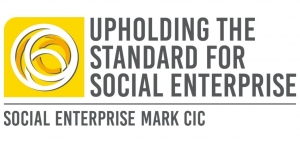Five essential factors for financial success with your social enterprise
By Heidi Fisher, Director of Make an Impact CIC
It’s easy to assume because there’s purpose, profit will swiftly follow, but you and I both know that only works if you work it.
As a Consultant to Social Entrepreneurs for over 20 years, I’ve built a robust understanding of the key factors that lead to financial success, and, for your convenience and relief, I’m going to share them right here.
Take note change maker, implementing these is not only smart; it’s your key to survival.
1) Manage your cash flow
 Cash is everything. You can be profitable, but if you have no money in the bank then you won’t exist for long.
Cash is everything. You can be profitable, but if you have no money in the bank then you won’t exist for long.
Here are some practical steps you can take to manage and improve your cash flow position.
- Take deposits for work if at all possible.
- Clearly state your payment terms and chase customers if they haven’t paid by the due date.
- Send out a reminder email before the due date and then phone them if it’s still unpaid.
- Emails can be ignored. If you don’t like chasing for payments then hire someone for an hour or two to do this for you. It also avoids you having to have difficult conversations with clients.
2) Keep overheads low
Stephen Fear, aka the Phonebox Millionaire, says this is one of the reasons he’s been successful, as he doesn’t spend a lot on on-going overheads. He’s right because so often people think they need to get premises straight away before they’ve even generated any income. Reality is, you probably don’t need it and you won’t have the income to pay for it either! Think about what is essential for your social enterprise and what you can do without.
Another point to mention is the importance of paying your suppliers on time. Big or small, they’re a business too and are likely to be experiencing the same challenges as you. Keep it honest. Keep it fair, and that way everyone can benefit.
3) Pricing- Don’t undervalue your activities/products/services
Decide from the start whether you want to be budget, mid range or premium, but appreciate and be OK with the connotations attached to each.
Budget = could be perceived as providing low quality and attract customers that aren’t loyal and are only concerned about where they can get the cheapest item. Having a low price also makes it very difficult to increase prices in the future, and you could remain at breakeven or worse loss making just to keep this competitive edge. That aside, budget doesn’t always mean ‘cheap’ in the damaging sense of the word. As long as your service/product’s quality is aligned with price expectations, you can find ways of adding value that impresses the low-level customer, whilst not breaking your bank, i.e. customer service.
Mid-Range = safe. A good share of the market are what we call ‘floating voters’, which means they will happily straddle between price and quality often opting for the product or service that catches their attention the most (good marketing, product placement etc.) A potential drawback of this would be a lack of identity. Mid-range pricing can make you appear unsure of where your true USP sits, which, for a social consumer is key, for they often buy for the ‘why’.
Premium = Risky. Premium pricing requires thorough understanding of your market – you must be confident what you’re offering is what they need/want and are willing to pay the privilege for. Where higher prices mean reduced pressure in mass sales, it always requires consistent market research and development, plus strong relationships with your consumer. Loyalty is everything here, as is good, effective marketing.
My advice is to focus on determining YOUR value factors and being very realistic over what they’re worth. If you conclude it’s slightly on the lower end of the pricing scale, so what, it’s fantastic you’ve identified this. Spend time crafting your message and communicate it effectively so you can make a surplus and do more of your good work.
4) Trade if possible
 If you’ve received a grant to help pursue your societal purpose, you’ll know all too well the limitations that come with this, not least the restrictions on what you spend the money on.
If you’ve received a grant to help pursue your societal purpose, you’ll know all too well the limitations that come with this, not least the restrictions on what you spend the money on.
Opting for a model that includes trading will ultimately give you so much more freedom, plus it doesn’t come with the reporting, monitoring or evaluation pressures from funders wanting to know where every penny’s being spent.
Being able to generate surpluses rather than just recovering the costs of delivering a project is also a massive advantage.
On a more subjective level, including trading within your business model shows that you’re focussed on your triple bottom line – something that will work in your favour should you wish to grow.
5) Diversify your income sources
Don’t get married, play the field! OK, so figuratively speaking, when it comes to your income stream, this is a very smart move, as depending on just one source of income is risky and unpredictable.
Some of the most successful Social Enterprises I’ve worked with have at least 3 or 4 income streams working within their business.
This can be achieved through offering a mix of products/services, or looking for ways to include your offering alongside a project/initiative/programme that compliments it.
Whether that’s a training programme, an online course, a license arrangement, membership, or even offering your expertise on a Consultancy basis, you want to minimise your risk of failure by securing income streams in different places.
So, there you have it. I’m under no illusion a lot of this won’t be new to you, but oftentimes the most successful strategies are the ones that are simple and timeless.
A little known figure called Albert Einstein once defined insanity as “doing the same things over and over and expecting a different result” – if you’re looking to secure financial success within your Social Enterprise, try one, two, three or even better all five of these strategies – I guarantee you they will work if you work them.





